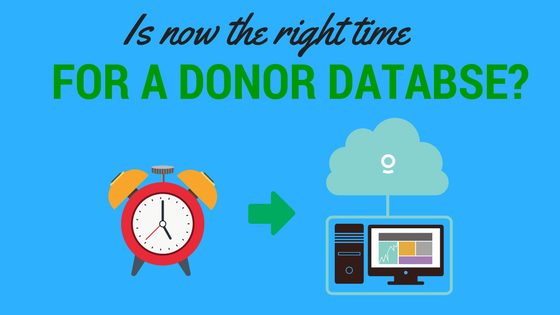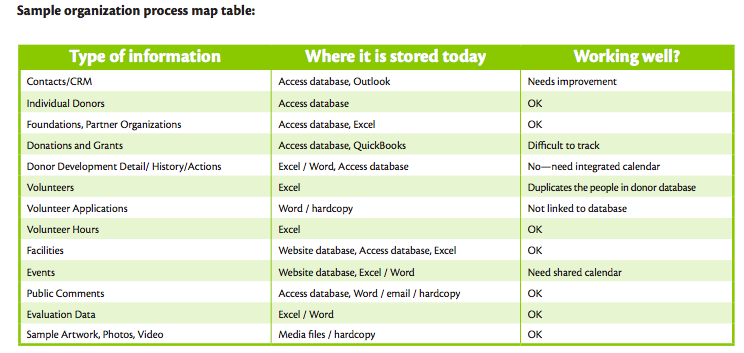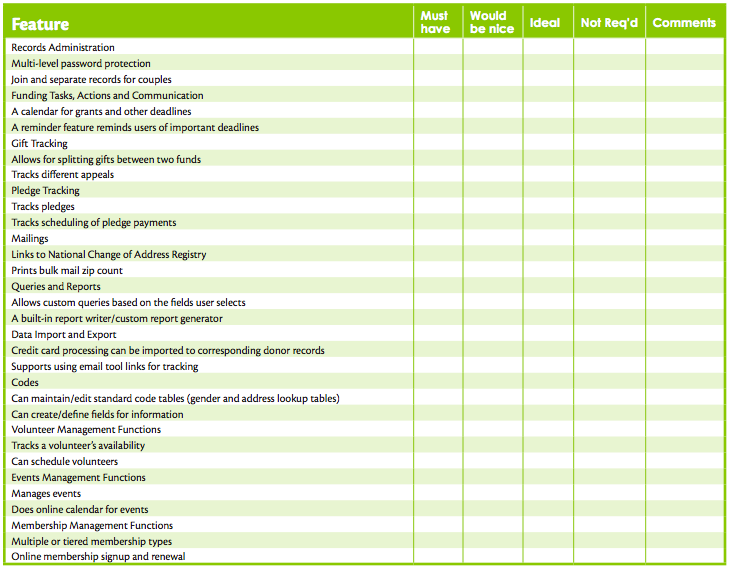Little Green Light is a cloud-based donor management system for fundraisers.
Subscribe to get our latest product updates, best practices and tips to grow your nonprofit.

In nonprofit development offices, hardworking staff are engaged in a variety of activities to advance their organization’s mission. From preparing and sending thoughtful communications to supporters, ensuring timely thank you’s to donors are being sent, managing volunteers, and coordinating a variety of events, little time is left to consider switching donor management software programs. But, believe it or not, it is precisely because of those many responsibilities that it’s key to explore if now is the best time to invest in a new donor management software.
Why invest in a new donor management software?
For one, donor management software programs have come a long way. With new cloud-based applications, access to data is better than ever and makes sharing information with your team simple. For another, donor management software comes loaded with a variety of tools that can make your existing work easier and more efficient.
Let me explain how by providing a few common scenarios that a good donor management software can help you avoid:
You hold an annual event but have no record of who’s been invited in the past, whether they attended, or which businesses provided sponsorships.
You’ve sent out fall appeal letters and would like to make some personal follow-up calls to your top prospects. But you don’t know who’s previously donated, and even if you did, you don’t have their current phone numbers.
One of your organization’s top donors, who’s made a gift every year since you opened, has called to say that she doesn’t want to receive any further communication from you. This is because she’s received three letters addressed to her deceased husband, after requesting that his name be removed from future correspondence.
You’re asked to pull a list of everyone who’s given at least $100 to each of the past three annual giving campaigns. You have the data, but it’s spread across multiple spreadsheets, and comparing donors from one spreadsheet to the other takes hours.
Does your nonprofit organization struggle with data issues like these?
If so, it might be time to explore some different donor management software. In this article, I’ll guide you through the questions you should ask about changing your donor management software, and I’ll even provide you with some helpful tips from leading fundraising experts. That way, should you need help convincing other members of your team that you need a change, you’ll have expert advice to share with them.
What do you need from a new donor management system?
Every organization is unique, and what they need to and are able to accomplish varies. Recommendations from other organizations that operate similarly to yours are great, but be careful about choosing a system because well-known organizations are using it. It may be working well for them because they have the resources to manage it. Make sure you match your organization’s needs with the features/functions of the system, and be sure your organization has the capacity to manage the system now and in the future.
This helpful workbook from Idealware and TechSoup, and following the three steps below, will get you on your way.
Step 1: Assess
To begin, you’ll want to assess your organization’s data needs and usage and document how that data is being managed now. Consider the types of information you currently use, how they are being stored, and if this process is working for you.
This sample of an organization process map from NPowerSeattle (now 501Commons) can help get you started:

Taken from http://www.fundraising123.org/files/donor+management+toolkit+book.pdf
Step 2: Prioritize
Next, create a checklist to help you document your donor management software needs, being sure to differentiate what’s needed (must have) from what’s possible (nice to have). View this sample listing of features to include on your checklist (and add your own as well):

Taken from http://www.fundraising123.org/files/donor+management+toolkit+book.pdf
Step 3: Review systems
Now that you’ve identified your organization’s needs, it’s time to search for a donor management software. It’s important that you find the right one. Not every system will meet your needs. How can you find the best solution? Here are a few tips that will help:
Do preliminary research online
Talk with other nonprofit development professionals in organizations similar to yours
Use these resources:
www.Idealware.org: This site offers reports and articles aimed at helping nonprofits locate the best technology resources for them. Idealware completed a Consumer’s Guide to Low Cost Donor Management Systems in May 2017 that’s helpful to reference.
www.techsoup.org: This online community is a great resource for information on nonprofit technology, offering numerous articles, discussion groups, how-tos, and software donations to eligible nonprofits.
www.capterra.com: This free service provides a listing of software solutions for all types of businesses, including non-profits, and has independent reviews for each of the donor management solutions.
Is now the right time for a change?
It’s important to consider the timing of acquiring a new system and plan for it. But, let’s be honest; there is never any “downtime” in your organization, right? So it’s important to recognize that it’ll take time and to plan for that. What does that mean, exactly? My recommendation would be to allocate 2 to 3 hours per week over the next month to evaluating your organization’s needs, exploring what’s available, and planning for the transition. Scheduling these hours as meeting time on your calendar might help make it stick.
One final point
Consider how your organization’s fundraising plan is impacted by data. (If you don’t have a fundraising plan, check out the Fundraising Authority’s article on how to develop one.) For example, if you’re counting on your annual gala to bring in the lion’s share of revenue for the year, evaluate what types of data are needed to make the event a success and review how your current database helps/hinders that success.
About Little Green Light
Here at Little Green Light, we understand that lots of questions can arise as you consider a change to a new donor management software program. We strive hard to make sure that you can easily find the information you need, either through reviewing our Knowledge Base or our website, without needing to speak to a “sales person.” LGL is a bit untraditional in this way—we want to make it as easy as possible for you to explore what Little Green Light has to offer, and to know what it will cost to use, without needing to engage in a high-pressured sales pitch. We invite you to join us for a free demo of LGL to learn more, contact us with any questions you have, and give LGL a try for free so you can test it out for yourself.
Ready to try LGL? Get your first 30 days free. No credit card required.